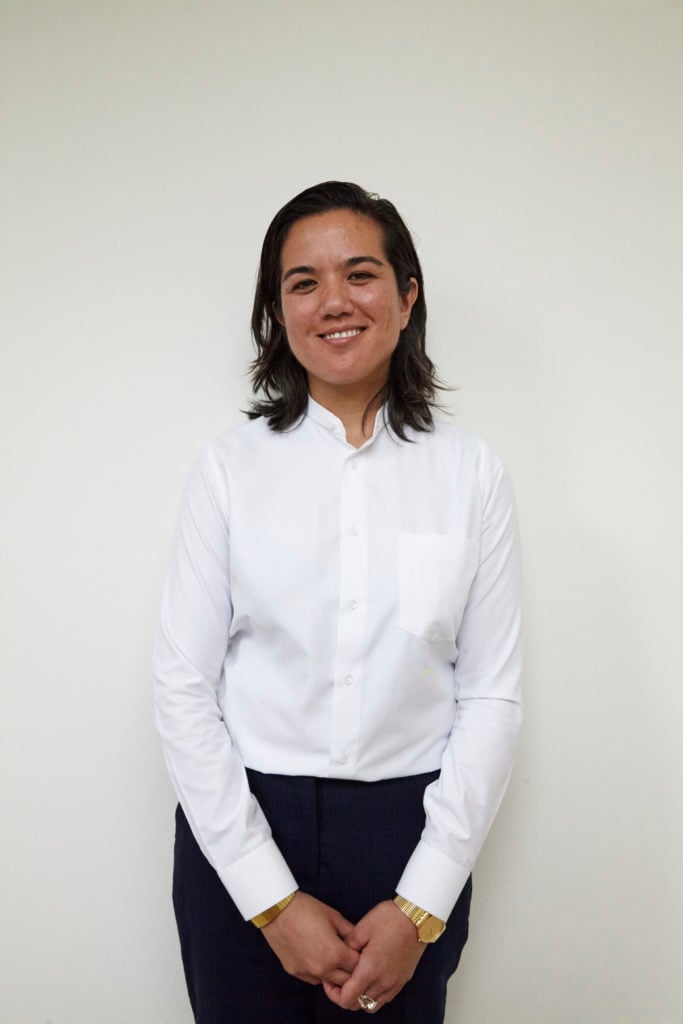Galleries
Embrace Your ‘Naive Confidence’ and 4 Other Tips for Young Art Dealers From Jasmin Tsou, Maverick Owner of New York’s JTT Gallery
The up-and-coming gallerist outlines how she got her start.

The up-and-coming gallerist outlines how she got her start.

Eileen Kinsella

Jasmine Tsou, who runs the gallery JTT in New York’s Lower East Side, first realized she might be better suited for a career as a dealer than an artist when her fellow students’ work at New York University’s studio arts program started to interest her more than her own
“My artwork ended up being reports about other people’s work,” she told artnet News. After college, she spent a semester teaching at NYU in Shanghai before entering the gallery world, with stints at Maccarone and Kimmerich galleries. Seven years ago, at age 27, Tsou opened the first iteration of JTT, in a small storefront on the Lower East Side. Four years later, she expanded into a larger space on a second floor on Chrystie Street, where her dynamic program of emerging artists has become a much buzzed-about spot on the scene.
Tsou, now 34, spoke to artnet News about her five essential tips for aspiring gallerists and artists looking to make it in the industry.
In 2011, when Tsou was first exploring the possibility of life as an independent curator, she met for coffee with Matthew Higgs, director of the alternative art space White Columns. “He was someone I admired a lot for being able to make a career out of that,” she says. But Higgs advised her against becoming a curator and suggested she instead open her own gallery. He also offered some practical advice for a starting point: Rent a booth in the special project space at that year’s NADA art fair in Miami, then priced at a very reasonable $2,000. Tsou cobbled together the money for a booth, where she showed work by 17 artists, including Elaine Cameron-Weir, Felipe Jesus Consalvos, Vaginal Davis, Rebecca Kolsrud, Andres Laracuente, Bob Mizer, and Bill Walton. She sold enough work that she could begin thinking about next steps.
Tsou was crashing in a spare room her brother and sister-in-law’s house to cut back on living costs when she secured a storage space with a storefront on Suffolk Street for “pretty cheap rent,” she says. “The gallery space was very very small. I wasn’t really able to have staff or even have guests come to just sit and talk.” But she took advantage of its ground-floor location to organize “some really great, ambitious projects,” such as a large pipe work by Charles Harlan that she removed a large window to install. “In the beginning when you don’t have a lot to lose, you can have a sort of naive confidence. I was lucky to have that,” she says.
“Fairs for a young gallery are very different than for an older gallery. We’re mostly doing solo presentations and introducing an artist to a community that doesn’t know anything about them,” Tsou says. She has so far participated in Art Basel editions in Miami, Hong Kong, and Switzerland and will appear at the next iteration of FIAC in Paris, where she’ll presenting a solo booth of work by Jamian Juliano Villani. It’s a huge investment to make in an artist’s career, she notes, and “it definitely takes up to half a year, or sometimes a year, for that investment to pay off. But it does.” It’s a testament to the fact that, even in the digital age, “personal relationships are still the most important part of our business.”
Tsou jokes that the reason she was the one among her artist friends in college who became a dealer is because “I was better at bullshitting, and definitely better at interfacing with the world at large.” But she’s also proven adept at working with artists, particularly those just starting who might be intimidated by the prospect of navigating the art world. “It’s important for a young artist to feel that things are approachable, that they can share their own story, or whatever it is they are interested in or care about. You have to trust that your perspective or the artist’s perspective is important and worth being considered. It starts there.”
Tsou says she emphasizes to artists that “it’s much more likely that they will have success if they can build a community of artists that they can grow with instead of approaching dealers they don’t know or have relationships with.” Tsou says she sees the artists in her program as “complementing” one another, but what she’s looking for changes from one year to the next. “I really care a lot about the formal qualities of the object. Things have to be very stimulating visually, and concept and politics often follows that.”
The next show at JTT, “Elaine Cameron-Weir: strings that show the wind,” opens September 8 at 191 Chrystie Street.